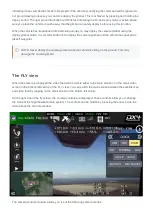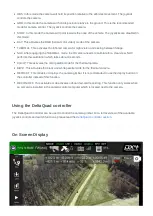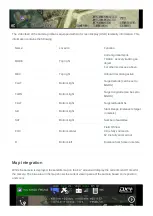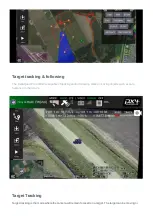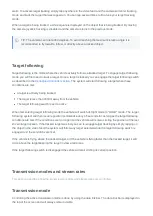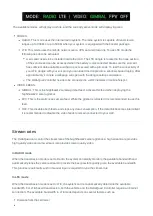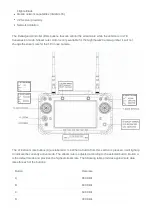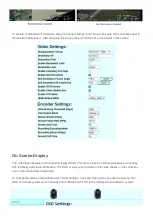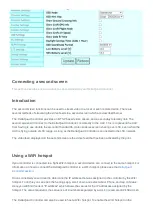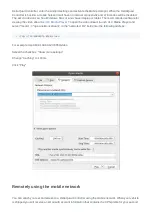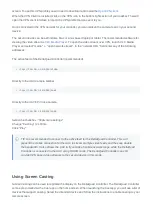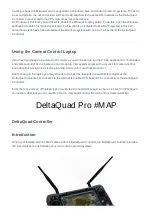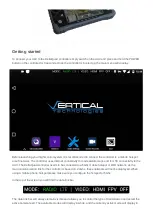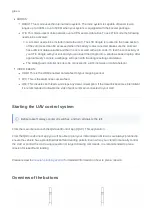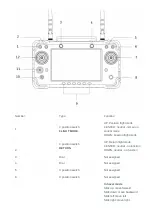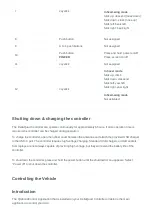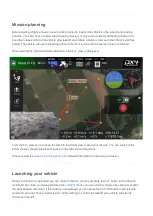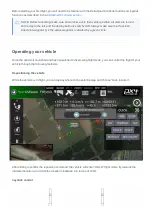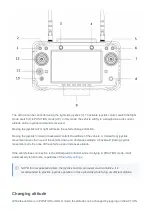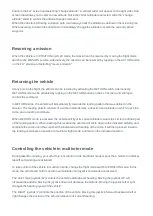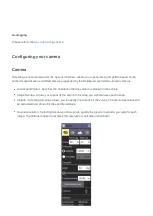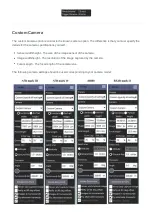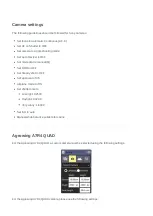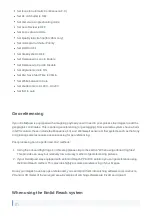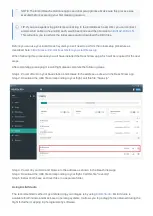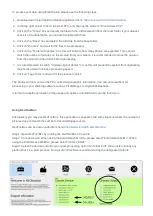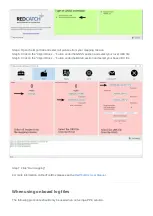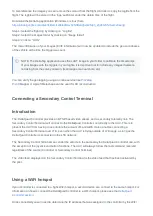
green.
MODES:
RADIO: This mode uses the internal radio system. The radio system is capable of transmission
ranges up to 30KM, or up to 50KM when your system is equipped with the booster package.
LTE: This mode uses mobile network over a VPN secured data link. To use LTE mode the following
needs to be activated:
A sim card needs to be installed inside the UAV. The LTE dongle is located in the nose section
of the vehicle and can be accessed when the battery is disconnected. Make sure the sim card
has sufficient data available and that it is not secured with a pin-code. To test the connectivity of
your LTE dongle with your sim card you can insert the dongle into a windows based laptop. After
approximately 1 minute a webpage will open with the dongle settings and status.
The DeltaQuad controller needs to be connected to a WiFi network or mobile hotspot.
VIDEO FEEDS:
HDMI: This is the HDMI enabled camera feed of your mapping sensor.
FPV: This is the static nose camera feed.
OFF: This disables both feeds and stops any data consumption. If the data link becomes intermittent
it is recommended to disable the video feeds to remain connected to your UAV.
Starting the UAV control system
Before takeoff, always center all switches, and turn all dials to the left.
From the main menu launch the QGroundControl app (QGC). This application
From the QGroundControl app you will be able to plan your initial mission. Missions are always planned to
ensure the vehicle has a predefined takeoff and landing pattern. Even when you intend to manually control
the UAV or control the UAV using reposition or target following commands, it is recommended to plan a
mission for takeoff and landing.
for detailed information on how to plan a mission.
Overview of the buttons

